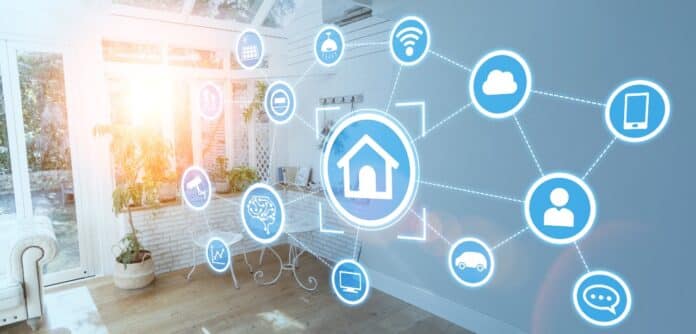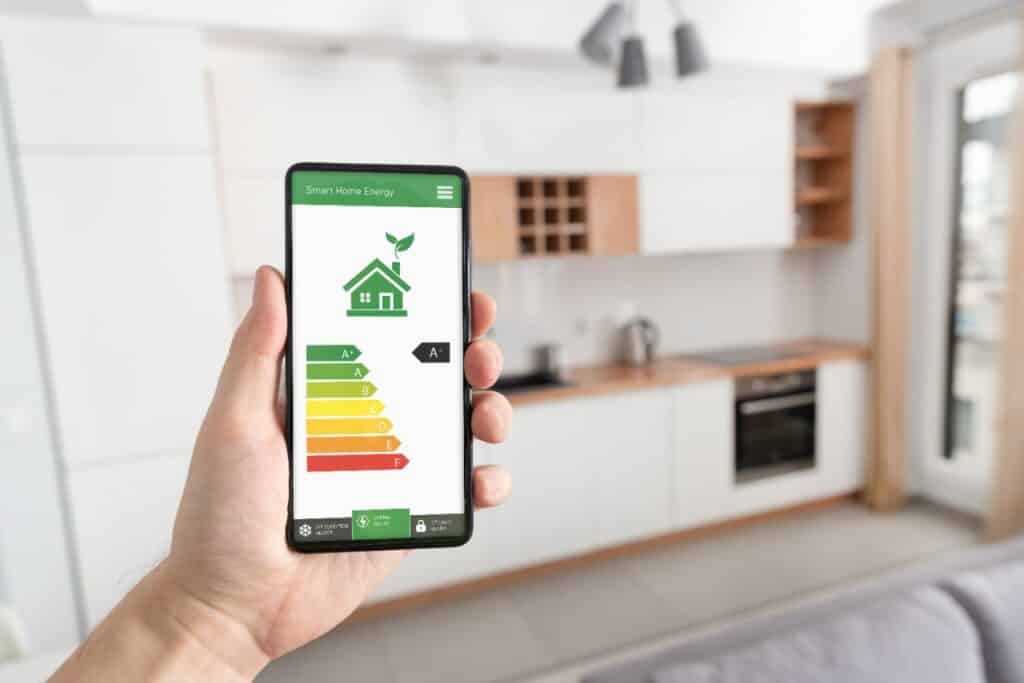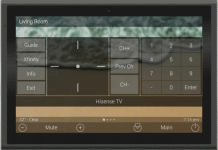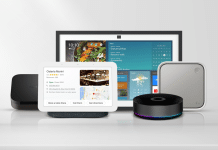
The concept of smart homes and home automation has turned urban homes safer and cheaper to maintain by reducing recurring electricity costs while creating scopes of tracking and controlling energy usage through smart energy management systems.

In today’s fast-paced tech-savvy world, automation is becoming an integral part of systems for most sectors, especially industrial, residential, hospitality. The residential sector in India is currently witnessing a technological revolution with the market getting bombarded with automatic or smart home appliances, lighting and lighting controls, security devices and entertainment systems. “In a smart home, there could be various systems such as entertainment, security, and energy management. Amongst these, energy management is an important part of a smart home and has two main features: feedback and automation. Energy feedback helps visualise energy consumption and give suggestions or tips to the users for reducing energy consumption. The feedback has three main aspects: frequency, level, and comparison. The frequency of feedback could vary from real-time data to monthly, and level could vary from total home energy consumption to an individual device level consumption, such as AC. A comparison could be of two types; between the current and previous periods or with other households of similar nature. Some actions can be automated and could reduce the reliance on manual controls, thus saving energy. Some examples are switching off the geyser automatically at a pre-set time or putting on the window shades whenever there is excess sunlight”, explains Vishal Garg, Professor and Head, Center for IT in Building Science, IIIT Hyderabad.
Need For Energy Management

Due to the rapid population growth, economic development and increasing dependence on electrical energy, the energy consumption level is rising drastically. Research says, the electricity demand of the energy sector will increase to 40%, the commercial and residential sectors will increase to 25% by 2025. “Electricity is a scarce commodity. Every bit of the generated electricity, be it from renewable or nuclear resources, will always have some effect on the sustainability of life on this planet. Therefore, the usage of energy can never be free or cheap. I believe an optimised usage of energy needs to be encouraged with some sort of incentivised billing or awarding some brownie points to homeowners. The objective should always be to reduce and optimise the use of energy”, says Ar. Milind Mantravadi, Green Matrix Sustainability + Technology, Bengaluru.
“Air conditioning accounts for a significant part of electricity consumption in India. The trend to use large glass windows result in higher solar gains, adding to the air conditioning load. Automatic curtains should be used to reduce the load on air conditioning and improve thermal comfort. Further, one should rely more on natural ventilation whenever outdoor conditions are favourable”, explains Garg.
“Further, there are several initiatives for the decarbonisation of the electricity grid. Renewable energy sources such as rooftop solar PV are becoming popular. However, such renewable energy sources are intermittent which necessitates the storage and demand response. We are also witnessing the popularity of electric vehicles, which will put a tremendous load on the grid. Home energy management systems could play a vital role in balancing the generation, storage, and electricity consumption. In the USA, the EPA has developed ENERGY STAR SHEMS specifications which establish required energy saving features designed to deliver cost savings as well as user convenience. Currently, in India SHEMS is at a nascent stage. However, we are witnessing sustained growth and interest among the homeowners”, elaborates Garg.
“Power management at a refined scale can happen only with Advanced Energy Management systems. The energy at peak demand is expensive and at off-peak demand is less expensive. The formula is rather than using less energy, you use less energy at peak and use that differential energy at off-peak. However, at all times the main intent will be to reduce the generation and consumption of energy, overall from the sustainability or reduced carbon footprint perspective. The only way to achieve this is by reduced generation and optimised use of energy by understanding the consumers’ needs and profiling their energy usage. With the advancement of connected devices or smart devices, the superior communication network demand will be pushed to develop extremely advanced energy management systems which will integrate into our smart appliances, phone and smart gadgets, smart cars to extract data from our homes”, adds Mantravadi.
Introduction to energy management systems:
Fundamentally, energy management systems (EMS) help to monitor and control the energy consumption of appliances and equipment, by gathering the data through the device sensors and transferring it to the database. Also, these reduce the energy consumption of a building, apartment or standalone house, using software algorithms.
The idea of home automation or smart homes is turned into reality by constantly-evolving technology. Primarily, the concept aims to offer, the users, control over the everyday home electrical appliances, lighting, security systems, the option of managing those through smartphones or tablets and ensure better energy conservation with optimum use of energy.
“A smart home energy management system (SHEMS) could provide a single integrated interface to a user, thereby allowing several devices to be controlled simultaneously and providing an automatic sequence of actions. There can be multiple objectives in a smart home energy management system, such as maximising comfort or minimising energy, emissions, and costs. However, these parameters are often inversely related. For example, while thermal storage (switching on the geyser at night-time to store hot water, when the cost of electricity is low and using it in the daytime when the cost of electricity is high) is used in case of time-varying tariff to save cost, there is an increase in energy consumption. It is difficult to optimize comfort, cost, energy, and emission simultaneously. There will generally be a need to trade off one parameter with the other. At IIIT Hyderabad, we are developing SHEMS under a DST funded Indo-UK project RESIDE- Residential Building Energy Demand Reduction in India. In this project, we will develop and deploy SHEMS in 200 homes to evaluate its performance”, illustrates Garg.

The advent of the Internet of Things or IoT is one of the biggest milestones in the home automation sector. Implemented by sensors, controlling devices and actuators, IoT based home automation systems allow one to control all devices through internet protocols or cloud-based computing while offering flexibility over the wired systems, advantages like ease-of-use, ease-of-installation, mobility and easy fault detection. Above everything, the energy-saving attribute of a home automation system makes them desirable and beneficial for the mass. “The rise in home automation system penetration is making a significant change in user lifestyles and driving energy efficiency. Tata Power EZ Home solution empowers the End users to control and manage their energy usage and this positively impacts all stakeholders simultaneously”, says Sujay Kumar Saha, Head- ESCO & Home Automation, New Business Services, The Tata Power Company Limited.
Opening up about the growing popularity of smart homes, Garg says, “Various factors are responsible for the growing popularity and adoption of smart home devices. The recent advances in the Internet of Things (IoT) have resulted in low powered and low-cost computing devices. Also, the availability of low-cost internet has driven the adoption of connected devices. A transition from edge computing and physical storage to cloud-based computing and storage has enabled the easy application of Artificial Intelligence and Machine Learning. Overall, these advancements have brought tremendous functionality and intelligence to these low-cost devices”.
“Tata Power EZ Home is an IOT based solution which offers smart energy management through efficient control of electrical appliances in a Household to its end customer. It also provides the comfort, control, convenience of operating the home appliances through voice & smartphones from anywhere. As per Oct-21 monthly generation statistics, 75% of the net power generation in India is met by Thermal power. Optimized power usage and demand from end-users through IOT based Home Automation solution will help to serve new customers without new capacity addition in the Generation, T&D network. Thus it helps in reducing the greenhouse emissions in the entire power value chain”, adds Saha.
The Major Perks
“Home Automation is perceived to be complex in technical architecture. Tata Power EZ Home is a unique solution which developed energy management above control & connectivity layer to enhance sustainable living by savings electricity & carbon footprint reduction at affordable cost”, says Saha.
“Energy Management built upon energy data analytics platform in-house by Tata Power to detect wastage of energy consumption real-time basis & initiate actions for savings. The user can compare this parameter against the rated power consumption of electrical appliances & can initiate maintenance actions immediately. Electrical Energy consumption tracking is available on the House level, individual Room level, individual appliance level as well as appliance category level for analysis. The user is informed about the room/appliances which contribute to high energy consumption and accordingly control for savings. A setting for monthly energy consumption is available for the user to track the monthly consumption and projection against the threshold. This feature enables the user to get slab-wise electricity tariff benefit by maintaining the consumption within limit”, adds Saha.
The primary advantages are:
Cost Saving
Households opt for smart energy management products or systems due to numerous reasons. Economic returns and cost-efficiency come at the top of the priority list. Smart energy management systems or devices are designed to decrease energy waste. For instance, smart lights with sensors can detect the presence of a person and automatically turns off when the room gets empty. “Tata Power EZ Home solution offers tangible benefits for the users in terms of savings from energy management and timely maintenance/repair of electrical appliances. Let us consider a case wherein the average consumption of a household is 600 units with an Energy Charge Rate of ₹ 6.5/ Kwh. Due to low ambient temp, in the early morning around 3-4 am, we feel chilled with AC running. But, we just pull up the blanket and keep the AC on. Tata Power EZ HOME allows one to automate the operations like switching the AC OFF/ON. Hence the effective savings in a month can be around 60 units/month (1.5KW x 2Hrs x 70% [compressor operating condition] x 30 days/month). This is equivalent of saving ₹390/month (60 units/month x ₹ 6.5/unit)”, says Saha.
Tracking
A small circuit breaker panel can be installed to get access to real-time power consumption insights. One can keep an eye on the whole house, check energy consumption, environmental impacts and also manage the same remotely through the web or mobile dashboards. Certain smart energy monitoring systems are capable of identifying the risk of an outbreak or a malfunctioning appliance in advance.
“The user can comfortably monitor and operate the appliances remotely as well as via voice commands. It facilitates customers to use appliances during their requirement in a day and can save the wastage of electricity during not-in-use condition”, explains Saha.
Carbon footprint reduction
Smart energy management systems reduce power consumption, which leads to reduced emissions. Eventually, the carbon footprint diminishes. Solar power converters, storage and emission reduction systems are being devised and widely used due to the rise of residential renewable energy.
Indian Market Scenario
“During the period 2009-2019, the residential electricity demand increased at a rate of 7.5%/annum which is slightly higher than total electricity demand of 7.3%/annum. As per the BEE report on Smart Home Program- Technology Assessment study and Pilot design published in July 2021, implementation of energy efficiency measures can help in reducing the energy demand of the residential sector anywhere between 30% to 40 % for new construction as well as a retrofit in the existing building stock”, says Saha.
Research says, in India, the energy management systems market size is expected to reach $2,145 million by 2023, from $635 million in 2016, growing T CAGR of 19.1% during the forecast period (as per alliedmarketresearch.com).
The EMS market players in India are expecting the fast-growing economy and increasing manufacturing capacity of India to bring fruitful business opportunities for them. The recent initiatives taken by the government aim to establish the country as the next manufacturing hub and lead the workforce to efficient utilization of resources. As a result, the EMS industry is anticipated to get profitable opportunities for inefficient energy distribution, consumption, and transmission. Besides, the public utilities and infrastructure in the country are rapidly developing with the integrations of smart solutions in smart cities projects. This is expected to drive market growth in future. The only obstacle the industry is currently facing is the lack of awareness of EMS solutions and their benefits.
The energy management systems market is anticipated to witness the highest growth rate in the Asia Pacific region, due to rapid industrialization, rebates, and tax incentives from various governments across the region, especially in China and India. These are expected to boost sales.
The energy management systems market in India is segmented into service, offering, end-user, component, market vertical and regions. The offering segment is subdivided into services like monitoring, controlling, implementation, integration, maintenance, consulting, training and systems like home EMS, building EMS, and industrial EMS. In terms of components, the market is bifurcated mainly into sensors, controllers and software. The end-user segment is split into the residential and commercial segments. When it comes to the market vertical, the EMS industry is branched into power, energy, telecom, IT, manufacturing, healthcare and a few more.
Today, every sector is keen to devise a cost-cutting technique. Therefore, the rising requirement of energy management in enterprises, offices, and commercial buildings is expected to boost the market growth of building EMS solutions in the country. In India, there are enterprises, small and medium, which still depends on backdated techniques and manufacturing technologies. “India is still at a primitive stage when it comes to automation in the Indian homes. When we talk of Global markets, we relate to the developed nations where most of their citizens have structured homes loaded with comfort equipment, safety systems and appliances. However, India, is nowhere close to providing such benefits to the majority of the population, where having a roof of their own, is still a dream”, says Mantravadi.
The government is putting considerable efforts to enhance the manufacturing capacity to match that of the developed nations. “Developing nations like India, with its huge population, improved disposable income and facilitated financing options, is moving towards owned or structured homes. Owned carpet area per family is increasing as well. Further, the per capita consumption of energy in the home segment is increasing with the ever-growing appliances and smart home markets.
India needs to consider the perspective of being one of the major energy consumers soon and working on a long term sustainable solution for energy usage. Today, we are may be able to generate energy as per our requirements, but the bigger challenge is to route the amount of energy to a precinct at a given time. For the same, we need advanced energy management systems that are better suited to the Indian consumers”, adds Mantravadi.
Drawbacks
“The primary concerns are security and privacy. In one of the surveys that we conducted, it was evident that homeowners give the highest priority to ensuring the security of their devices and the privacy of their data. There can be serious consequences if any device is compromised, or the data is breached. Stringent standards, testing, and certification are required to address this concern. Another concern is the energy consumed by smart devices. It has been observed that these devices can consume significant energy even when they are switched off. This extra energy consumption can sometimes be more than the energy savings achieved by the use of such devices. Again, standardisation will play a significant role here. There is also a need to develop standards enabling the interoperability of smart home devices”, says Garg.
“One of the latest efforts to bring SHEMS in national code has been the inclusion of the annexure, Smart Home, in Eco-Niwas Samhita-II, which is a national energy conservation building code for residential buildings. It is expected that SHEMS will be a part of the main code shortly”, adds Garg.

Latest Innovations
The electric grid is obsolete and hence, it is not competent enough to cope with the increasing electricity demand. “In early 2020, we witnessed a surge in global energy demand to supply imbalance caused by COVID19 and its associated lockdowns.
The POWER GRIDs found it challenging to handle the situation. Further, the resulting trend of Work from Home (WFH) shifted the entire supply chain of energy requirements from the Technology Hubs, entertainment industry, Malls, Retail, Hotels to individual residences which became extremely strenuous for the power and its distribution companies to store and re-route as per this unconventional routine”, explains Mantravadi.
Smart grid (SG) is the modern power grid, which is devised to churn out a solution. It is an intelligent electric grid that accommodates internet-of-things (IoT), modern control technologies, information and communication technologies (ICTs), two-way power flow, and hybrid generation. To overcome a challenge like high electricity demand, SGs can be used in the installation of power generating plants or broadcast demand response (DR) programs.
Way Forward
“Building energy management plays a crucial role to automatically manage the output of power according to the demand whereby during peak hours, it will automatically take energy stored in the battery or other storage solutions, or set a scheduled shutdown or down trending or re-scheduling your home activities so that the demand-supply at the POWER GRID can be managed”, says Mantravadi.
“Each home in 2025 will have close to 30 connected devices including smart homes, appliances, Alexa, and not to miss the 5G reaching the width and breadth of the nation. The Home automation data will further use the historic database gathered via the various connected devices, predict, make case-based rules and process big data via its Artificial Intelligence (AI) and make decisions based on the power available at the GRID or within a specific urban precinct”, adds Mantravadi.















